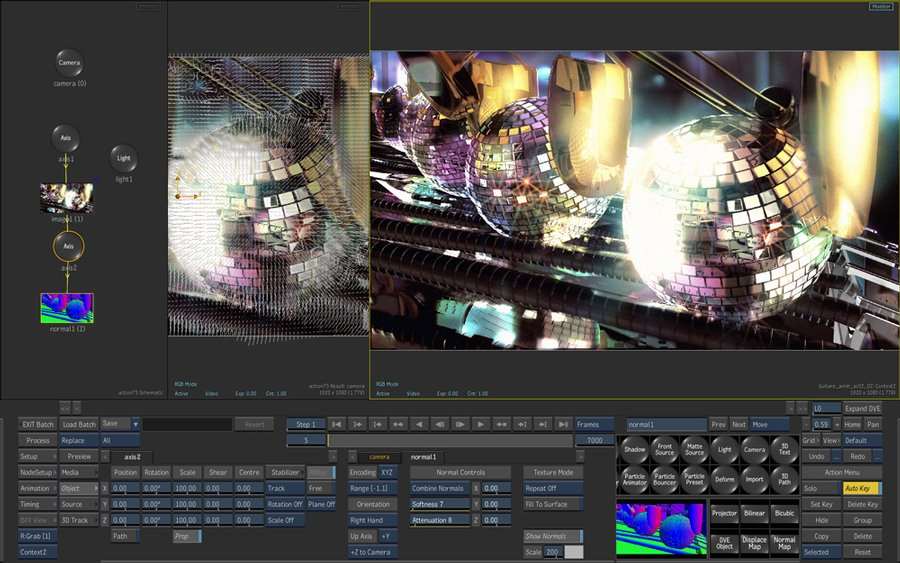

- #Aces workflow for autodesk flame how to#
- #Aces workflow for autodesk flame movie#
- #Aces workflow for autodesk flame free#
They are both in Gamma 2.2 sRGB only difference is the HDRI is 32-bit floating point while the other texture most likely is 8 or 16-bit integer.ĮDIT: Correction Actually for HDRI and floating point textures a use of “Utility - Linear - sRGB” is being suggested. >Filmic is easy to use and the results can be very good.<<Īlso you don’t want to convert everything, Textures that contain COLOR (Basecolor, Albedo) are going to be converted to ACEScg while textures that contain DATA (Roughness, Spec, Normalmaps) are gonna be left alone and input as Non-Color/Raw (Linear sRGB) just as you did before.įor sRGB you’d use the “Utility - sRGB - Texture” transform, same for the HDRI. I don’t care for Blenders Compositor workspace it is pretty ham-fisted/useless and can’t be executed properly without rerendering.
#Aces workflow for autodesk flame how to#
If you’re rendering in ACEScg you most likely want to do Compositing work also in that space, so you’d have to learn how to do that in Fusion, Nuke or Davinci Resolve/Fusion. (Bonus: Blenders Color Picker widget is completely fucking broken in HSV mode when you are in ACEScg only typing in RGB works) Also any Assets you get online need to be checked/converted.Įvery Flat Color you input into any Shader/Material needs to be ACEScg instead of Linear. The time spent reading up on the topics, making sure you don’t make an error along the way and fuck up your color pipeline will most likely overshadow everything else.Ĭollaboration and working together in ACES is a bit of a pain, because everybody needs to know how things are done correctly to not break the color pipeline. Is the difference worth it versus the time invested? It depends.
#Aces workflow for autodesk flame free#
You will get a free GI bounce, you can push more lights into the scene, your colors will not look as washed out as they do with some of the Filmic Tonemapping modes. Will the renders look better? If you do it correctly yes.
#Aces workflow for autodesk flame movie#
The Lego Movie was rendered entirely in ACEScg even tough it is full CGI, to get those brilliant colors and correct looking Lights. You will benefit even if you’re not going to be working with Camera Footage and integrating into Plates. There is also some explanation here that will help fill a few knowledge gaps if you have any - ĪCES is a pretty big topic, it’s not a one button solution. There is a fuller answer over on stackexchange.

Will your colours look more accurate? They might look the same when they come out as when they went in, but you’ll be viewing them on the same monitor. That’s not to say ACES isn’t a very good thing or won’t do any good, it will do a really good job at helping with the things it can help with, and maybe one day it will be the default setting. Rendering to ACES, on it’s own, isn’t a button that will make a ‘better’ render. jpg textures you would be kind of missing the point. The short answer is if you’re not doing data transforms from different input devices you might not need ACES, and if you’re looking for ways to set colour spaces for rendering. On the other hand, we might not have had Filmic without ACES having been developed soooo. The down side of ACES is that it doesn’t do gamut mapping, so renders won’t necessarily match output made with Filmic enabled. So using ACES won’t create any new, better data, it just might help you lose less by keeping your data scene referred.ĪCES was created more for combining film and video, however cg data has been included from the start since cgi is such a large part of film making. The idea behind ACES is to be able to convert output from a large number of different camera formats to a single, very large colour space without data loss or distortion. You could write book in reply to seemingly simple questions like these, so this isn’t a very full answer.


 0 kommentar(er)
0 kommentar(er)
